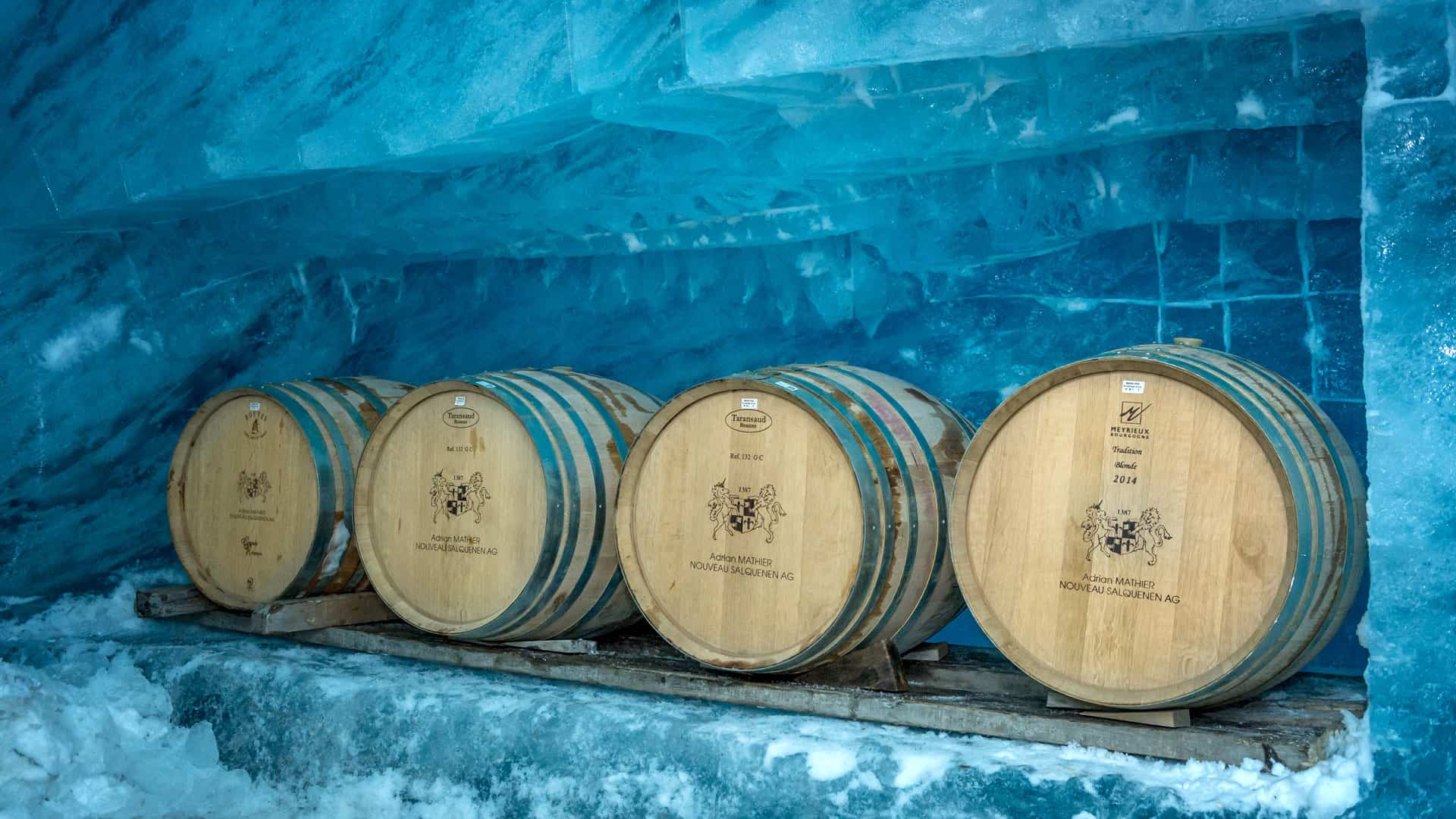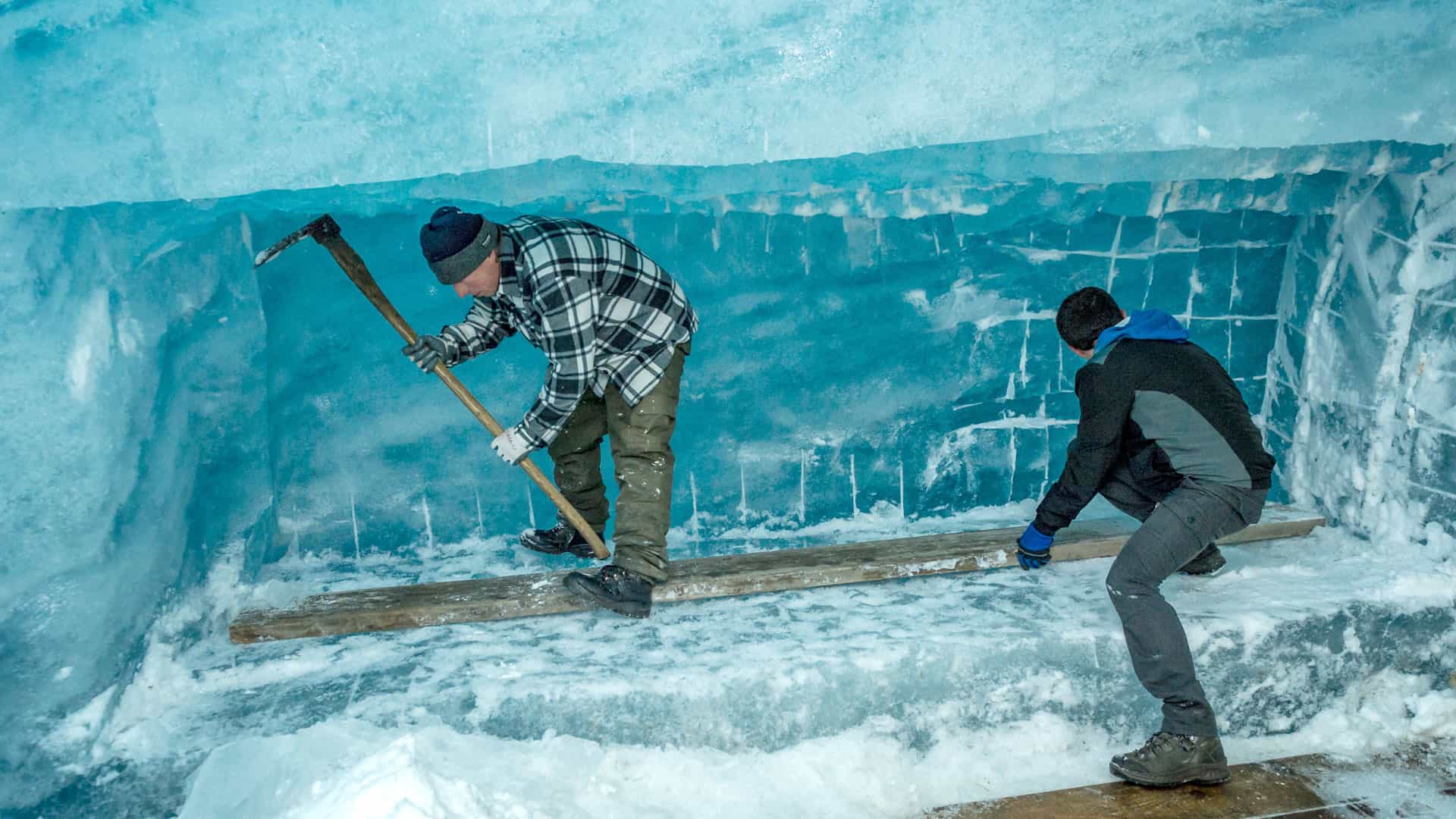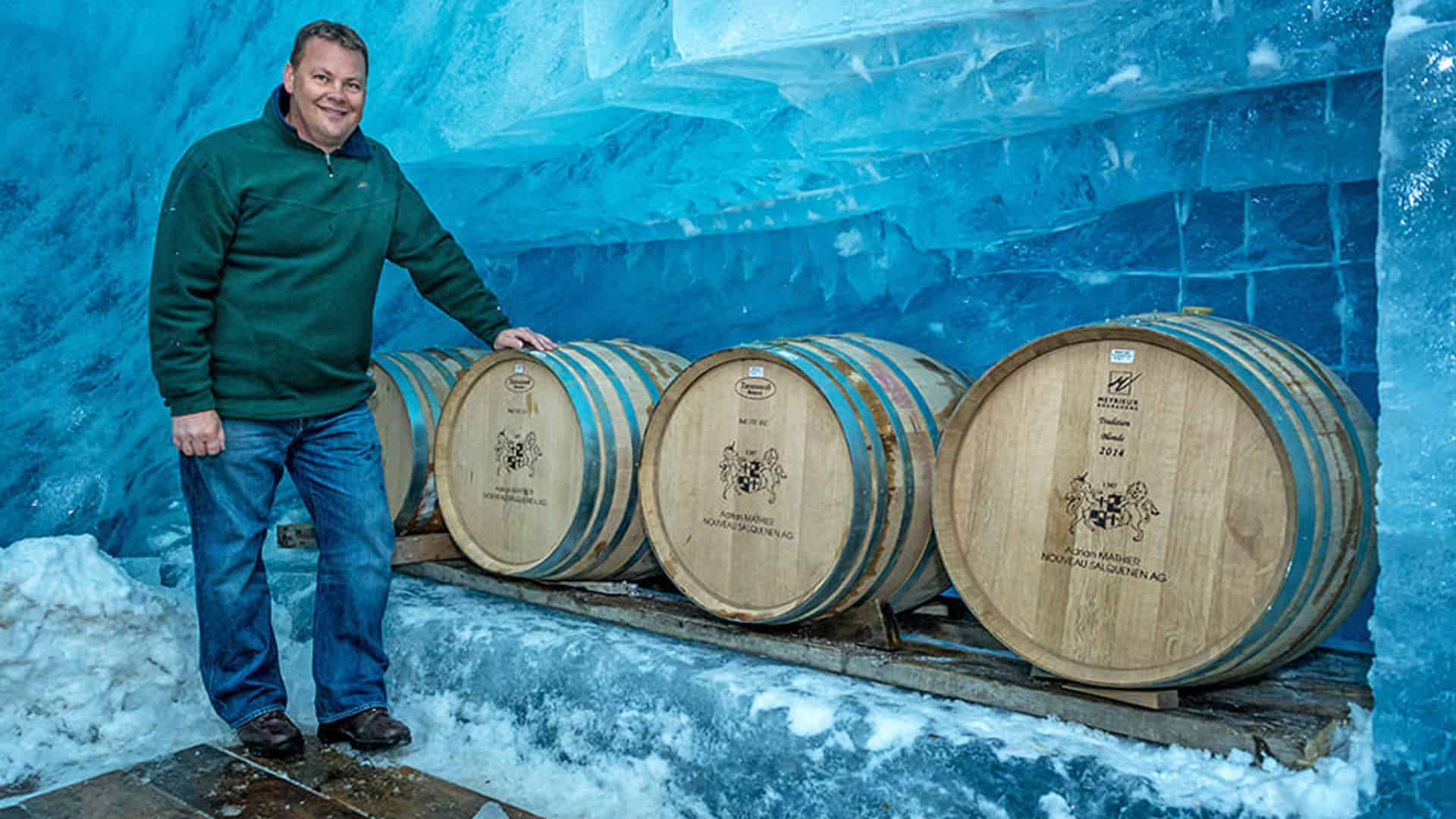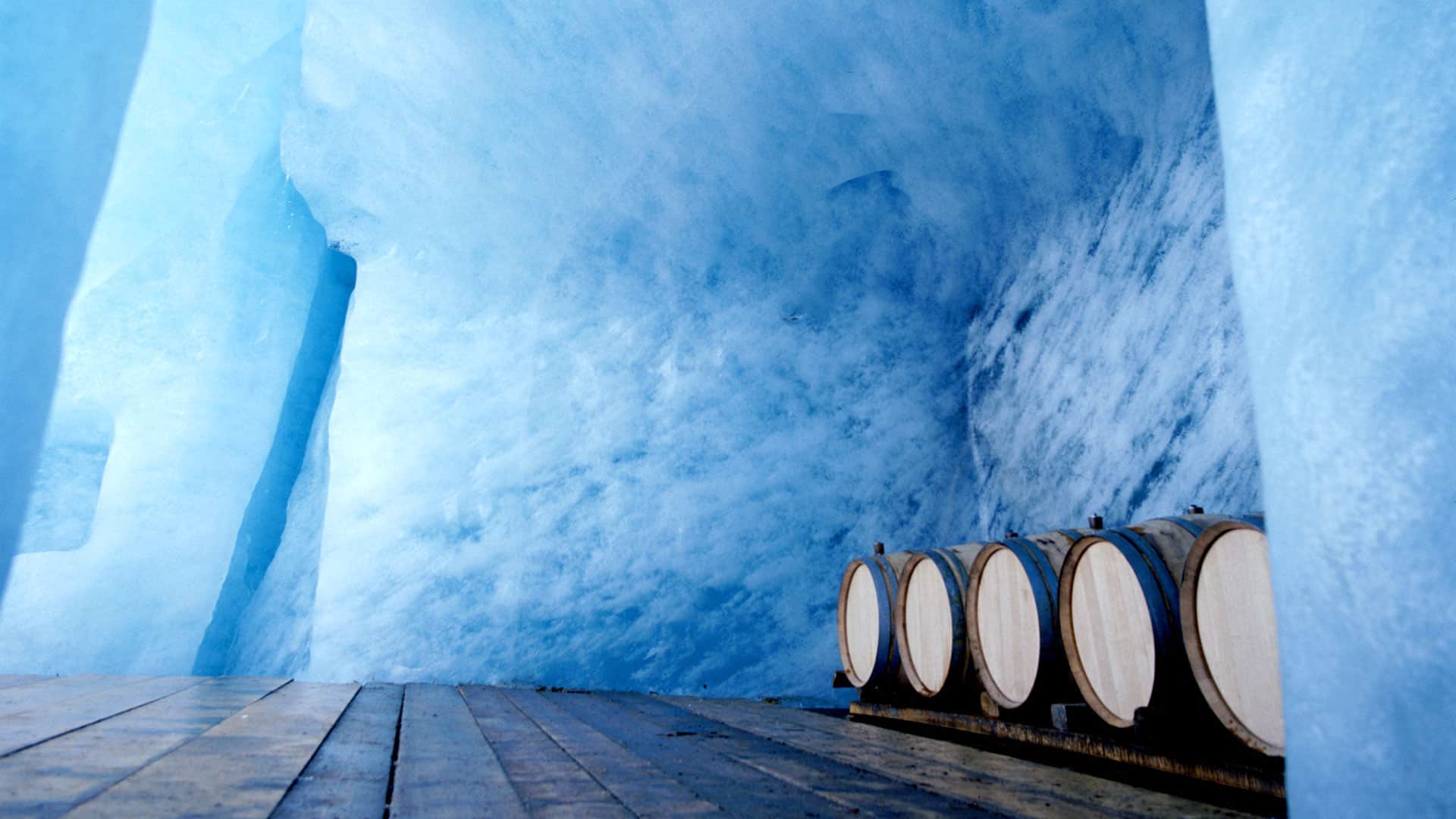Glacier grotto at the source of the Rhone
There was already a natural grotto at the outlet of the Rhone Glacier around 1830. Later, caves were carved into the glacier to offer tourists an attraction. Before the turn of the century (19th/20th century), the lower grotto collapsed as the glacier retreated. And so, since 1894, the grotto in the Belvedere has been carved into the glacier again and again with great effort. As early as 1906, F. A. Forel, a well-known glaciologist from the University of Lausanne, reported that the artificial grottoes run through the clearest ice and that he had found almost no rocks anywhere. “I know of no other glacier with such a splendid, deep and strong blue as in the so-called Azure Grotto of the Rhone Glacier.”

The glacier is alive and moving. In the area of the ice grotto, the glacier moves no less than 30 to 40 m per year; that is about 10 cm per day. In spring, the ice grotto from the previous season is so displaced that it has to be completely rebuilt every year. It takes a lot of time and manpower to carve the grotto into the ice. In total, around 350 tons of ice are excavated.

But the effort and expense are worth it, because the path through the ice cave to the glacier chamber has a very special and irresistible charm. Once you have taken the first steps into the glacier, the light changes to a magical bluish hue. The glacier ice in the grotto is 200 to 300 years old, which can be calculated based on the annual glacier migration. Thanks to nature, dedication, creativity and a love of wine, three-time Swiss Winemaker of the Year Diego Mathier from the eponymous Adrian & Diego Mathier Nouveau Salquenen winery in Salgesch has succeeded in creating these fine glacier wines for wine lovers. His sweet wines from the icy cold add a culinary highlight to any menu. Discover exquisite dessert wines.


